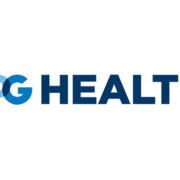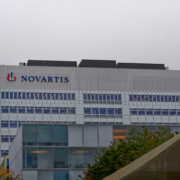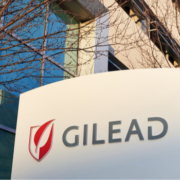Why emerging manufacturers need specialized communications that are built to scale
Why emerging manufacturers need specialized communications that are built to scale
By Kimberly Cash
For emerging manufacturers, listing through all the steps of a launch plan can be intimidating, so hearing that medical affairs and communications needs to be integrated from the beginning can feel like one more thing is being added to the overflowing to-do list of an understaffed team.
However, including this at the early stages of product development (late phase 1/early phase 2) is as integral to launch success as meeting regulatory hurdles. Having specialized medical affairs and communications from the start sets the critical framework for every key stakeholder communication that follows, including investors, healthcare providers, patients, payers, and caregivers.
Groundbreaking sciences need sophisticated messaging support
Because of the nature of the company and what they are developing, emerging companies need customized medical affairs and communications. They are not coming out with the 20th iteration of a drug that is already out there; they are applying novel science to create life-changing therapies.
Whether it is cell and gene therapy or a whole new chemical entity that came from a university lab, it is usually something that is not part of a previously understood concept. Because doctors might not know how it works, or where it fits in the standard of care, it takes a lot of education to help them understand the game-changing potential of the science. That story starts with building preclinical data and continues through post launch.
The same goes for payers and patients. There is a lot more complex information for them to understand, meaning there’s more back-end work to be done in getting your science communicated in a way that resonates with them. For all stakeholders, getting the right information out through the right channels is tricky sometimes, too. The data must find them where they are and be easily understood, in context for the reader.
Smaller teams and smaller budgets need smarter strategies
Emerging manufacturers have a strength in how close to and how passionate they are about the science they are developing. But the other side is that because they are hyper-focused and familiar with the science, they often do not have the bandwidth or perspective to build out and implement all the various parts of the medical communications strategy.
Add the smaller budget that they are usually working with – compared to large pharma – and the work that goes into a med comms strategy can quickly become overwhelming. So, they need a strategy that works smarter, and sometimes harder, to stretch the impact of their budget.
A launch plan can span several years, so you need a plan and a partner that can look 3-5 years down the road and strategically assess what you need, as well as what to do now to avoid surprise costs later. Whether it is related to compendia, patient services, or medical information, your product’s launch strategy will have unique medical communications requirements every step of the way, so it pays – and saves – to have a forward-looking plan that includes tactics now that will set your product up for success later.
For example, if you have not consistently defined how unique your science is (in a clinical context) from the early phases of the process, then you risk lacking a source to refer to down the road to substantiate key differences to healthcare providers, payers, and patients. This will impact how the product is classified and described in EHRx, reimbursement claims, and compendia. The medical affairs and communications plan also influences the data available in the public domain to support externally facing materials such as medical information responses. The way to get ahead and stay ahead is to start building the story at the preclinical stage. Once you are at launch, you will not want to backtrack to get 3-5 years’ worth of data and communications in place.
Consistent communications for effective product ID
A common mistake when working on a shoestring budget is to bring in a medical writer to help with a general manuscript of the product, but it is important to think about how the manuscript fits within the overall communications plan.
When you get to launch, you need a consistent flow of data behind you that effortlessly summarizes everything you have built, and you want everything that is in the public domain to be anchored to the framework of your science while being in context with clinical practice and standards of care. This means that well in advance of launch, you want to be thinking of how your medical communications will influence every aspect of your launch so that HCPs know which patients will benefit from it, how to find it in the EHRx, how to prescribe it, and so payers can quickly identify it in prior-auth situations.
There is a strong imperative to establish a common lexicon that remains throughout the whole launch plan. This applies to both internal and external communications. As one example of this, you want the earliest manuscripts describing your product in medical journals to use the same terminology that HCPs and payers will recognize post-launch. If the terminology changes along the journey and the launch messaging no longer matches the early terminology, these key stakeholders will have gaps in their understanding of how drug’s science is meaningfully applied to their needs.
To address these complex challenges, you want to work with a partner who has a broad and deep view of the market so that they can advise you on a medical affairs and communications plan that considers the science, the competitive landscape, and the many facets of an effective launch to set the stage early for differentiating how your product uniquely meets the needs of the place in therapy where it will ultimately be aligned.
Therefore, you need more than just a medical writer to support you at one phase of your plan. You want strategic support with diverse, yet focused, insights and strong connections to your entire launch to create a cohesive and lasting medical communications strategy supported by state-of-the-art tactics.
Conveying the value of higher premiums
Products developed by emerging pharma often leverage more unique and complex sciences that produce a more durable effect. The complexity of the development process also drives higher premiums. These tailored products might be entering a market where the therapeutic outcome is significantly more effective than others.
Conveying the product value through a tailored medical communications plan, from the start, is key to bringing these complex products full circle where they can improve patients’ lives. Unless payers are compelled to cover the therapy, HCPs know how to prescribe it, and patients understand how it helps them, even the best treatments can lay to waste in the warehouse. Manufacturers typically do not consider medical communications at the point of preclinical and early development stages, as they are primarily focused on getting from one stage gate to the next. Driven by a passion for the science and changing patients’ lives, emerging pharma may presume others see the same, higher, value that they are closely familiar with from years of scientific development. However, it takes a strategic comms partner to help turn that passion into clear and convincing communications that can move their target audience past the initial sticker shock to understand the life changing potential that the product can deliver.
Emerging pharma is not for the faint of heart. The complex science, long and layered journey to launch, and cumbersome launch landscape all require a plan that maps out every step and includes details about how they relate to each other. Including a medical affairs and communications partner that meets you where you are, with tailored solutions made for you, fills the gap for this service without breaking the already strained budgets of emerging pharma. Adding this service early in the launch strategy is just as critical as any other step, and in many cases can boost other facets of the plan by arming them with the consistent and concise scientific messaging you need to move your product through each phase of development and onto a successful product launch.
 |
Kimberly Cash is a general manager of medical affairs & communications at Two Labs. She works with BioTech/BioPharma companies to deliver strategic medical affairs tactics and impactful strategic medical communications. Kimberly believes effective medical communications make a significant difference in patients’ quality of life and outcomes; this drives market share through an emphasis on engagement, quality, and valued experiences. Cash has led medical affairs development at small to large pharmaceutical companies and understands the unique challenges of BioTech/BioPharma through her experience leading several successful multi-faceted product launches in the BioTech/BioPharma space. She earned an inspirational leader award in 2020, holds board certification as a medical affairs specialist (BCMAS), and has passed the certification exam for medical publication professionals (CMPP). Cash holds a master’s degree in nursing from the University of North Carolina at Chapel Hill, where she earned the distinction of being a Johnston Scholar. |











